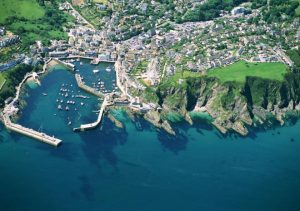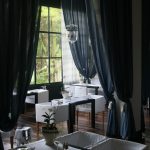Most people when they holiday in Devon are either very much North Devon fans or South Devon enthusiasts so is the same true for Cornwall? Does it have a coastline split?
Cornwall’s two coastlines are very different it has to be said and most people either favour one or the other. The north coast faces onto the Atlantic and is a mixture of spectacular wide-open bays beloved of surfers and small, steep rocky coves. The Atlantic coastline is dramatic and rugged with ruined tin mines clinging precariously to cliffs, picturesque headlands and sand dunes, it has an altogether wilder feel than the south Cornish coastline and this for some people is the real spirit of Cornwall. Contrast this with south Cornwall.
South Cornwall faces the English Channel and is a softer coastline with sheltered beaches, pretty secluded coves and tree-lined creeks and estuaries with exotic tropical gardens gently wandering down to the water’s edge.
Of the twelve areas that make up Cornwall’s Areas of Outstanding Natural Beauty (AONB), eleven of them cover sections of the Cornish coastline. So which is the best coastline to visit, north or south? While neither coastline will disappoint but most people do end up having a favorite.
Features of North Cornwall
With a more open coastline than the south of the county, north Cornwall has wide sandy beaches ideal for families and large tranquil estuaries. Pick a point from Bude in the north down to the coastal town of St. Ives in the south – this stretch of coastline was a real favorite with the poet, Sir John Betjeman.
Newquay is at the heart of the action if you want to surf with the very famous and spectacular Watergate Bay taking full advantage of the Atlantic breakers rolling onto the shore. It’s also a bit of a party place in the height of the season. If you want to opt for some peace and quiet then head to St. Agnes or the pretty port of Perranporth or go east towards some overlooked beaches east of the Camel Estuary towards Tintagel or Boscastle.
Tintagel Castle is a must-see on your holiday list and for the foodies, no trip to North Cornwall would be complete without a visit to Padstow which has its very own dedicated holiday following. Heading south towards Land’s End, for many St. Ives is the jewel in the Crown of the north Cornish coastline. A picturesque harbor on the way to Land’s End, St. Ives for many visitors, has it all. It is the archetypal Cornish harbor town with narrow streets and pretty whitewashed cottages, a choice of beaches and culture in abundance to be found at Tate St. Ives and the Barbara Hepworth Museum. You could easily spend all of your Cornish holidays in St. Ives and not venture anywhere else.
Where to go in south Cornwall
Fowey (pronounced ‘Foy’ to rhyme with ‘boy’) has a cult following amongst the south Cornwall brigade rather like St. Ives on the north coast. Fowey sits at the mouth of the Fowey River and is stunningly picturesque and famous for being the home of Daphne du Maurier, the famous author who wrote the novels, ‘Rebecca’ and ‘Jamaica Inn’.
Move along the coastline to the west and discover Falmouth which boasts the third-largest natural harbor in the world and is a traditional and very attractive port with lots to do and a great base to venture out into the creeks and estuaries of this part of Cornwall.
For many people, the Lizard Peninsula is their holiday destination of choice. With the town of Helston sitting at the top, why not book your holiday at the beginning of May and enjoy the famous Floral Dance? The Lizard plays host to some stunning coves and beaches, you can enjoy a different one every day of the week. Visit Church Cove Gunwalloe famous for the church on the beach and its neighbor Poldhu Cove which is a lovely location to swim at. And no trip to the Lizard would be complete without a trip to Kynance Cove and Asparagus Island, one of the most picturesque and most photographed beaches in this part of Cornwall.
For many south Cornwall is about the Roseland Peninsula bordered by the Fal Estuary to the west and the Atlantic to the east. Well located for St. Austell, enjoy the popular but never overcrowded fishing village of St. Mawes with its trademark castle and a curving sheltered bay. From St. Mawes you can take the ferry to Falmouth. The Roseland has some beautiful inland areas with sheltered walks and beautiful exotic gardens and you are never far from the coastal waters with quiet beaches, ideal for bathing, rock pooling, and watersports. Enjoy spacious beaches at Carne and Pendower with large expanses of golden sand or for seclusion choose Caerhays or Porthboer.
Fortunately, no location in Cornwall is more than twenty miles from the sea unlike Devon due to the unique configuration of the county so it doesn’t actually matter where your holiday accommodation is, you can enjoy both coastlines. Pick a salty seaside holiday cottage in one of the numerous classic harbor towns or hideaway inland in lush green valleys bordering peaceful creeks and quite windy lanes.
There is a huge range of holiday accommodation to suit your travel plans located on both coastlines and inland – you will be spoilt for choice. The staple Cornish fare is a square granite cottage or house either plain stone or whitewashed and there are thousands dotted around the county to complement your holiday. Characterful inside, they are the perfect retreat after a long hot day on the beach. In more sheltered locations inland or towards the southern coastline, you will also find some thatched cottages. If you prefer more contemporary accommodation there are modern houses, barn conversions and other more uniquely styled homes, in fact, there is something for everyone.








